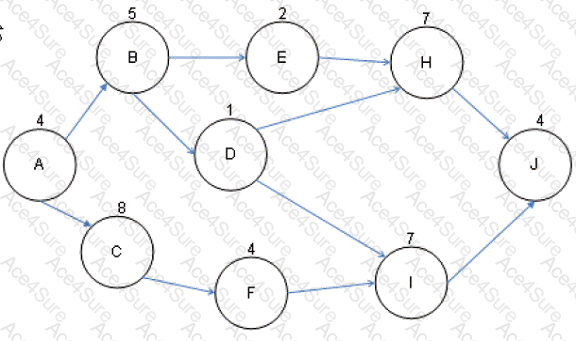The critical path is the path with the longest duration to complete the project. It has no float and shows the earliest completion date and the latest completion date for the project. In this example, path ACFIJ takes 27 days and is the critical path.
ACFIJ= A(4)+C(8)+F(4)+I(7)+J(4)= 27
A critical path is the sequence of project activities, which add up to the longest overall duration. This determines the shortest time possible to complete the project. Any delay of an activity on the critical path directly impacts the planned project completion date (i.e. there is no float on the critical path). A project can have several, parallel, near critical paths. An additional parallel path through the network with the total durations shorter than the critical path is called a sub-critical or non-critical path. These results allow managers to prioritize activities for the effective management of project completion, and to shorten the planned critical path of a project by pruning critical path activities, by "fast tracking" (i.e., performing more activities in parallel), and/or by "crashing the critical path" (i.e., shortening the durations of critical path activities by adding resources).
Answer option A is incorrect. ABEHJ takes only 22 days to complete.
ABEHJ= A(4)+B(5)+E(2)+H(7)+J(4)= 22
Answer option C is incorrect. ABDHJ takes 21 days to complete.
ABDHJ= A(4)+B(5)+D(1)+H(7)+J(4)= 21
Answer option B is incorrect. ABDIJ takes 21 days to complete.
ABDIJ= A(4)+B(5)+D(1)+I(7)+J(4)= 21

